Frederick Douglass Was It Easy to Escape Without the Key to Freedom
In his journey from captive slave to internationally renowned activist, Frederick Douglass (1818-1895) has been a source of inspiration and promise for millions. His bright words and brave actions continue to shape the means that we think about race, democracy, and the pregnant of freedom.
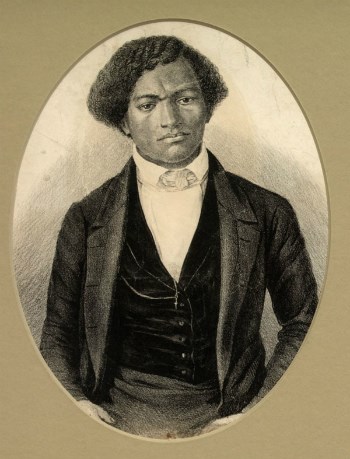
NPS / FRDO 2169
Slavery and Escape
Frederick Augustus Washington Bailey was born into slavery on the Eastern Shore of Maryland in Feb 1818. He had a difficult family life. He barely knew his mother, who lived on a unlike plantation and died when he was a young child. He never discovered the identity of his father. When he turned eight years old, his slaveowner hired him out to work equally a torso servant in Baltimore.
At an early on historic period, Frederick realized in that location was a connection betwixt literacy and freedom. Non allowed to attend school, he taught himself to read and write in the streets of Baltimore. At twelve, he bought a book called The Columbian Orator. Information technology was a collection of revolutionary speeches, debates, and writings on natural rights.
When Frederick was 15, his slaveowner sent him back to the Eastern Shore to labor as a fieldhand. Frederick rebelled intensely. He educated other slaves, physically fought dorsum against a "slave-breaker," and plotted an unsuccessful escape.
Frustrated, his slaveowner returned him to Baltimore. This time, Frederick met a young free black adult female named Anna Murray, who agreed to aid him escape. On September 3, 1838, he bearded himself as a sailor and boarded a northbound train, using money from Anna to pay for his ticket. In less than 24 hours, Frederick arrived in New York Metropolis and declared himself free. He had successfully escaped from slavery.
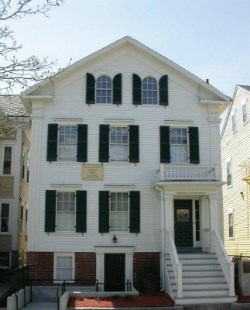
NPS
The Abolitionist Movement
After escaping from slavery, Frederick married Anna. They decided that New York Metropolis was not a safe identify for Frederick to remain as a fugitive, so they settled in New Bedford, Massachusetts. There, they adopted the last proper noun "Douglass" and they started their family unit, which would somewhen abound to include five children: Rosetta, Lewis, Frederick, Charles, and Annie. Later finding employment equally a laborer, Douglass began to attend abolitionist meetings and speak well-nigh his experiences in slavery. He soon gained a reputation equally an orator, landing a job as an amanuensis for the Massachusetts Anti-Slavery Society. The task took him on speaking tours across the N and Midwest.
Douglass'southward fame every bit an orator increased every bit he traveled. Still, some of his audiences suspected he was not truly a fugitive slave. In 1845, he published his start autobiography, Narrative of the Life of Frederick Douglass, to lay those doubts to rest. The narrative gave a clear record of names and places from his enslavement.
To avoid beingness captured and re-enslaved, Douglass traveled overseas. For nigh two years, he gave speeches and sold copies of his narrative in England, Republic of ireland, and Scotland. When abolitionists offered to purchase his freedom, Douglass accustomed and returned abode to the United States legally free. He relocated Anna and their children to Rochester, New York.
In Rochester, Douglass took his work in new directions. He embraced the women'southward rights movement, helped people on the Hugger-mugger Railroad, and supported anti-slavery political parties. Once an marry of William Lloyd Garrison and his followers, Douglass started to piece of work more closely with Gerrit Smith and John Brown. He bought a printing press and ran his own newspaper, The North Star . In 1855, he published his second autobiography, My Bondage and My Freedom, which expanded on his first autobiography and challenged racial segregation in the Northward .
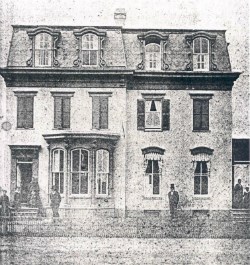
NPS / FRDO 11001
Ceremonious War and Reconstruction
In 1861, the nation erupted into civil war over the event of slavery. Frederick Douglass worked tirelessly to make sure that emancipation would be one of the war'southward outcomes. He recruited African-American men to fight in the U.S. Army, including two of his own sons, who served in the famous 54th Massachusetts Volunteer Infantry. When blackness troops protested they were non receiving pay and handling equal to that of white troops, Douglass met with President Abraham Lincoln to advocate on their behalf.
Every bit the Civil War progressed and emancipation seemed imminent, Douglass intensified the fight for equal citizenship. He argued that liberty would exist empty if former slaves were not guaranteed the rights and protections of American citizens. A serial of postwar amendments sought to make some of these tremendous changes. The 13th Amendment (ratified in 1865) abolished slavery, the 14th Amendment (ratified in 1868) granted national birthright citizenship, and the 15th Subpoena (ratified in 1870) stated nobody could be denied voting rights on the basis of race, skin color, or previous servitude.
In 1872, the Douglasses moved to Washington, D.C. There were multiple reasons for their move: Douglass had been traveling frequently to the area ever since the Civil War, all three of their sons already lived in the federal district, and the old family home in Rochester had burned. A widely known public effigy past the time of Reconstruction, Douglass started to hold prestigious offices, including assistant secretary of the Santo Domingo Commission, legislative council member of the D.C. Territorial Government, board member of Howard Academy, and president of the Freedman's Banking concern.
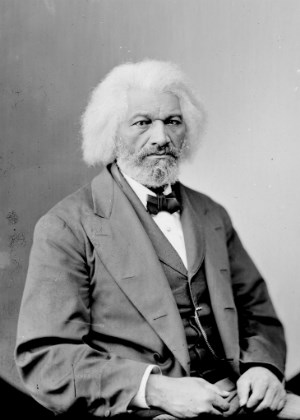
Library of Congress
Post-Reconstruction and Death
After the fall of Reconstruction, Frederick Douglass managed to retain high-ranking federal appointments. He served under five presidents every bit U.S. Marshal for D.C. (1877-1881), Recorder of Deeds for D.C. (1881-1886), and Minister Resident and Consul General to Haiti (1889-1891). Significantly, he held these positions at a fourth dimension when violence and fraud severely restricted African-American political activism.
On elevation of his federal work, Douglass kept a vigorous speaking tour schedule. His speeches connected to agitate for racial equality and women'southward rights. In 1881, Douglass published his third autobiography, Life and Times of Frederick Douglass, which took a long view of his life's work, the nation'southward progress, and the work left to do. Although the nation had made swell strides during Reconstruction, there was still injustice and a basic lack of liberty for many Americans.
Tragedy struck Douglass's life in 1882 when Anna died from a stroke. He remarried in 1884 to Helen Pitts, an activist and the daughter of old abolitionists. The marriage stirred controversy, as Helen was white and twenty years younger than him. Part of their married life was spent away. They traveled to Europe and Africa in 1886-1887, and they took upward temporary residence in Haiti during Douglass's service there in 1889-1891.
On February 20, 1895, Douglass attended a coming together for the National Council of Women. He returned dwelling house to Cedar Hill in the tardily afternoon and was preparing to give a speech communication at a local church building when he suffered a middle assault and passed away. Douglass was 77. He had remained a primal figure in the fight for equality and justice for his entire life.
-
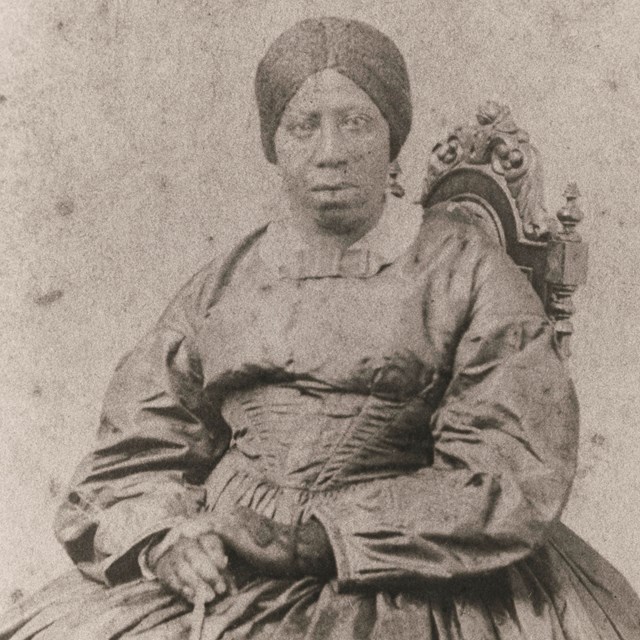
Anna Douglass
As a immature adult female, Anna Murray helped Frederick Bailey escape from slavery. They adopted the proper noun "Douglass" later marrying.
-
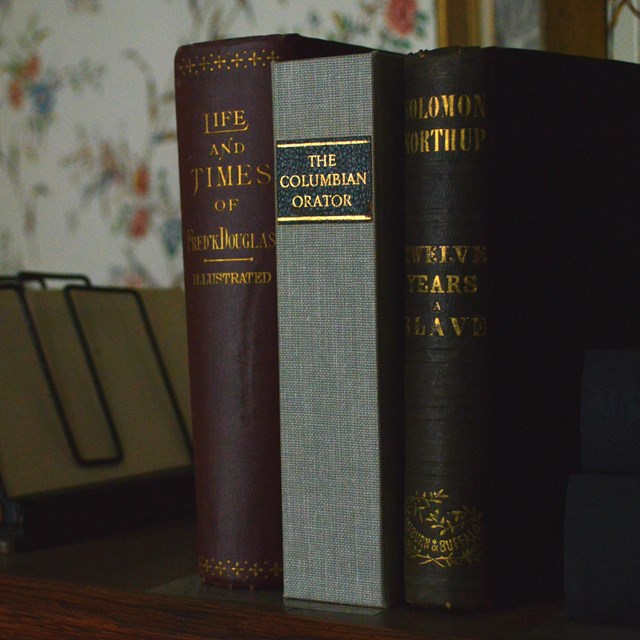
Suggested Reading
This listing of works by and about Frederick Douglass volition help you brush upwards on your knowledge.
-
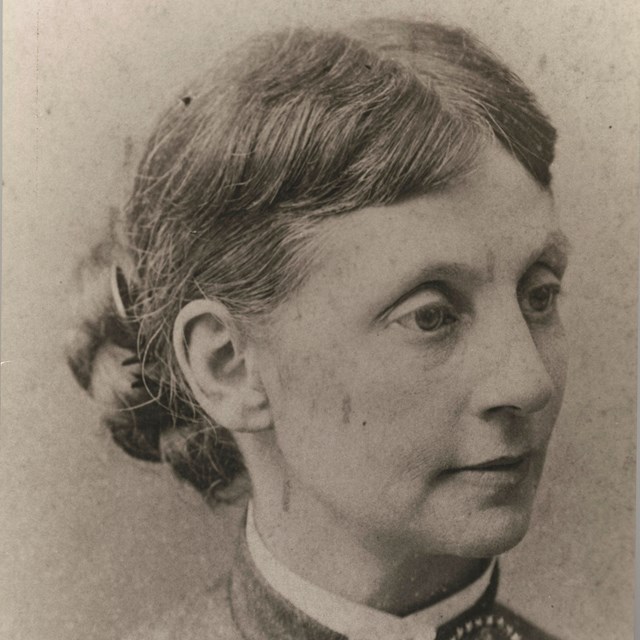
Helen Douglass
Later on Frederick Douglass passed away, his second wife Helen preserved Cedar Hill as a historic house museum.
Source: https://www.nps.gov/frdo/learn/historyculture/frederickdouglass.htm
0 Response to "Frederick Douglass Was It Easy to Escape Without the Key to Freedom"
Enviar um comentário